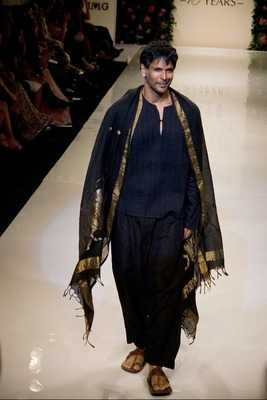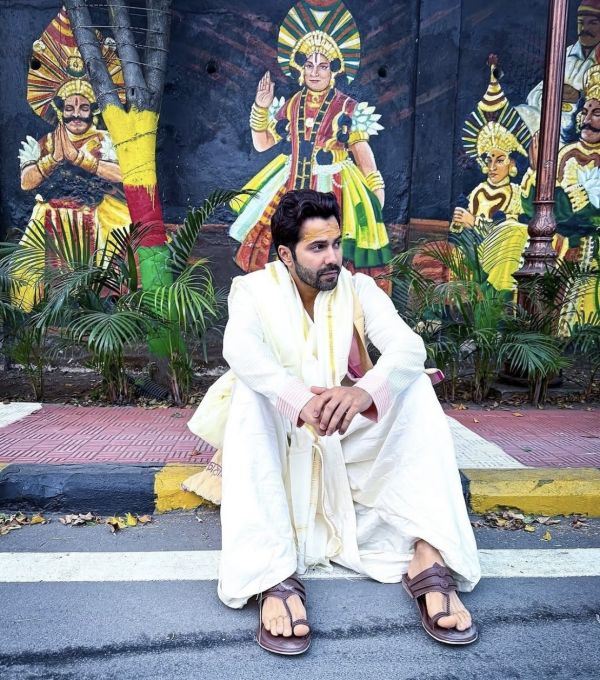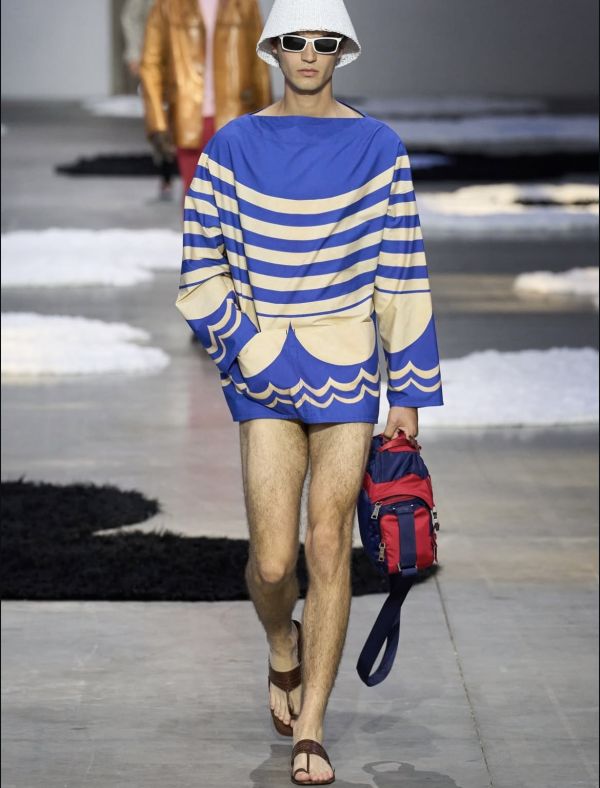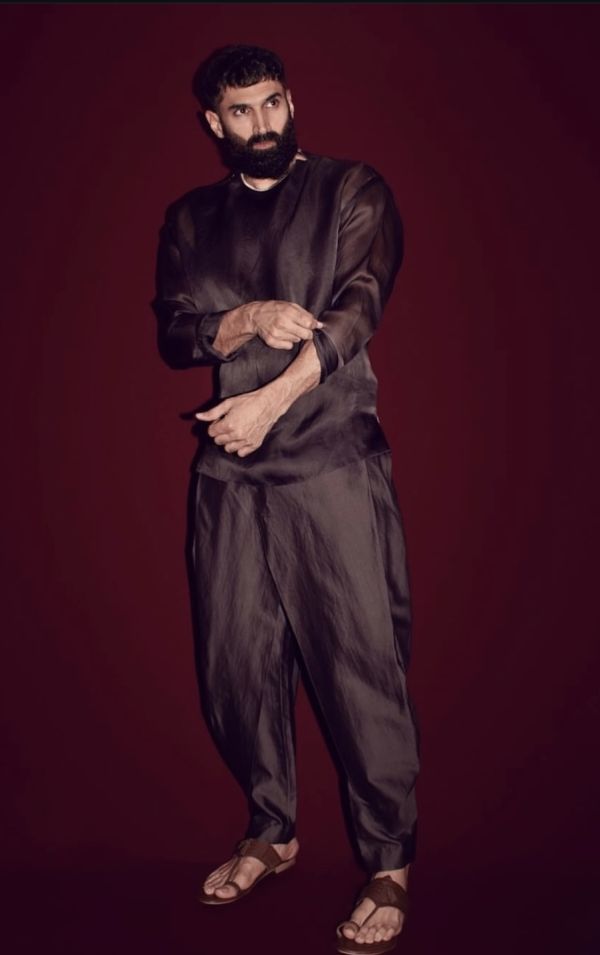
When Prada’s Spring/Summer 2026 menswear collection debuted at Milan Fashion Week, fashion insiders applauded the label’s pairing of tailored separates with flat leather sandals. But for many Indian viewers, there was an uncomfortable sense of déjà vu. The sandals bore a striking resemblance to Kolhapuris, the hand-crafted leather chappals that have existed in India since the 13th century. Only this time, they were given a luxury spin — devoid of credit, cultural context, or even a nod to the region from which the style originated.
This isn’t new.
In fact, it’s part of a long tradition in global fashion: borrowing Indian craft and rebranding it for Western luxury audiences, all while erasing the hands that created it.
1. Aesthetics Without Attribution © Instagram/bollytellybuzz
© Instagram/bollytellybuzz
The global fashion industry has always drawn inspiration from India. Think paisley prints, mirrorwork, zardozi embroidery, or the bandhgala jacket — all Indian staples that have appeared on international runways and in editorial spreads without context.
Take the case of Christian Louboutin’s collaboration with Sabyasachi in 2017. It was one of the rare moments a Western designer acknowledged an Indian peer, with Louboutin admitting his deep admiration for Indian craftsmanship. But collaborations like this are the exception, not the norm.
Compare that with Isabel Marant’s 2015 “Navaho” sandal, which replicated the Kolhapuri silhouette nearly exactly — again, without reference to its roots. Or Hermès, which in 2008 launched a $6,000 sari for the French market, framing it as an exotic luxury item rather than engaging with Indian artisans.
2. Prada’s Kolhapuri Confusion © Instagram/Nikhil Mansata
© Instagram/Nikhil Mansata
Back to Prada. The SS26 sandals mimicked the open-toe structure, vertical strap placement, and even the tanned leather tones of the Kolhapuri chappal — an artisan product protected by a Geographical Indication (GI) tag in Maharashtra.
There was no credit offered. No collaboration. No sourcing transparency.
And while it may seem innocuous to some — “it’s just a shoe” — the implications run deeper. When legacy Western brands reinterpret South Asian aesthetics, they control the narrative and the profit margins, often pricing these rebranded items at 10-15X their original value.
Meanwhile, the actual artisans behind the craft are struggling. A 2023 report by the Council of Leather Exports (India) noted that despite India being one of the world’s largest exporters of leather footwear, artisans continue to face falling margins and limited visibility in fashion supply chains.
3. The Real Cost of Cultural Borrowing © Instagram/Ali Fazal
© Instagram/Ali Fazal
Cultural appropriation in fashion is rarely just about design. It’s also about access, economics, and whose stories get told.
Consider the Ajrakh block print, native to Gujarat and Sindh. You’ll find high street versions of it in Zara and H&M, often without any recognition of its roots in the Khatri community, who have preserved the technique over generations.
Or the Angarkha-style wrap tunic, which was recently seen on Dior’s runway — but given a European reinterpretation, complete with a high price tag and zero Indian credit.
In menswear specifically, Indian silhouettes like the Jodhpuri suit, achkans, and safa turbans are often stripped of their identity and sold as “boho-luxe” or “global chic.”
4. Why Aren’t Indian Creatives at the Helm? © Instagram/Kunal Rawal Official
© Instagram/Kunal Rawal Official
The irony? India is not short of creative talent.
Designers like Suket Dhir, Kunal Rawal, Amit Aggarwal, and Rajesh Pratap Singh have taken Indian menswear global — blending traditional techniques with contemporary forms.
Khloe Kardashian went as far as to name Manish Malhotra a local designer from India. A man who walked the Met Gala and designed multiple outfits for global celebrities, including Beyoncé.
Yet, they’re rarely invited into the rooms where global fashion decisions are made. Indian designers are still seen as “regional” rather than international. And when major fashion houses do want Indian aesthetics, they opt for reinterpretation rather than collaboration.
This has a ripple effect: young Indian artisans see their craft imitated and commercialised abroad while their communities continue to be underfunded and underrepresented.
5. Where to Shop Instead: Indian Shoemakers Doing It Right © Instagram/Antar Agni Ujjawal Dubey
© Instagram/Antar Agni Ujjawal Dubey
A colour combo I don’t see too often. Baby pink with olive green is experimenting in itself. And, when paired with the bling necklace, that’s just Hardik saying he’s in a fashion era like no other.
Rather than supporting faceless luxury brands borrowing heritage for profit, here’s a list of homegrown Indian labels that are preserving — and reinventing — traditional footwear with integrity:
1. Aprajita Toor – Blending heritage craftsmanship with high-fashion detailing, her handcrafted designs put a luxe spin on the Kolhapuri and beyond.
2. NEEDLEDUST – Founded by Shirin Mann, the brand’s men’s line offers mojaris and slip-ons that feel elevated yet rooted in culture.
3. Fizzy Goblet – From brocade juttis to festive sliders, their men’s collection is equal parts playful and polished.
4. Jaypore – Known for championing artisanal work across India, their footwear selection features time-honoured silhouettes crafted the traditional way.
5. Eridani – With a focus on clean design and comfort, Eridani delivers everyday footwear that still nods to heritage shapes.
6. Rajesh Pratap Singh – While best known for his sharp tailoring, his footwear collaborations often elevate indigenous materials with luxury precision.
7. The Sole Sisters – Once a cult Instagram discovery, now a full-blown label offering earthy leather sandals and Kolhapuri reinterpretations.
8. Slomotion – Designed for conscious living, the brand delivers minimal, slow-made shoes with Indian souls and global aesthetics.
9. Elements – A sandal-first label that specialises in ethically crafted, versatile footwear with traditional echoes.
10. Mend – Focused on repair, reuse, and revival, Mend creates sustainable footwear by working directly with craftspeople and salvaged leather.